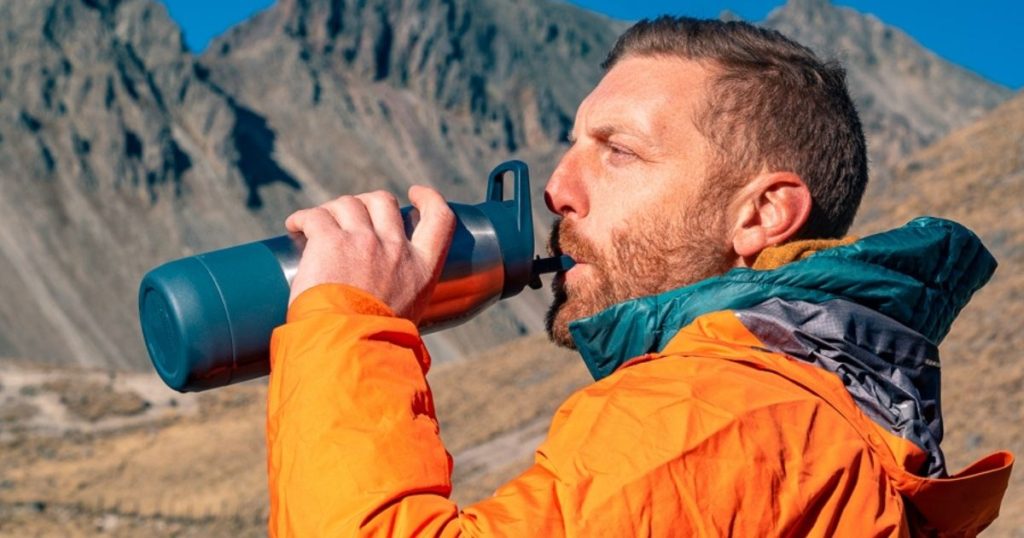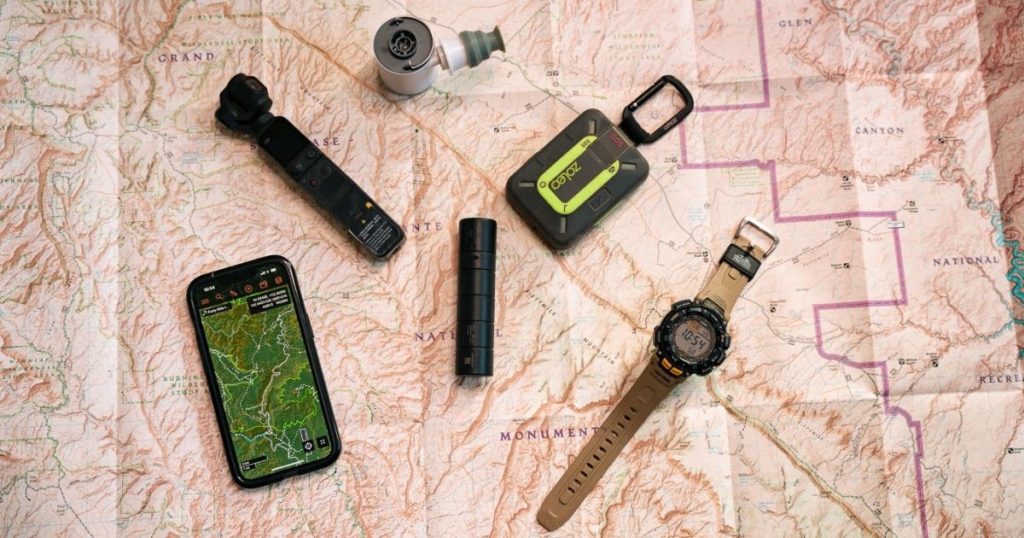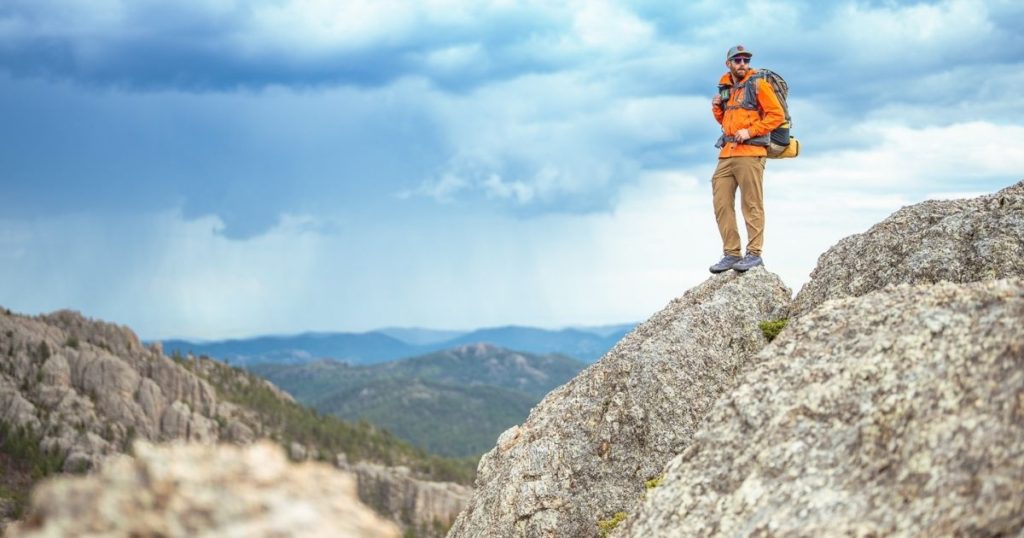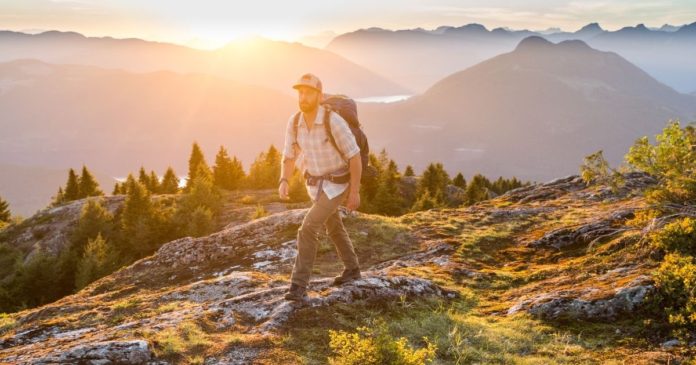Today is a tale of my personal mistakes, in hopes that my mistakes can provide useful backpacking tips. Mistakes happen whether you're a beginner backpacker or someone who has been doing it your whole life. Things get overlooked in our excitement, or delirious fatigue, or in the cases I'll tell you about today, excessive confidence. I've spent many years backpacking advanced trails and was a guide for 3 years.
Though these experiences are largely an asset, my successes have also contributed to some boneheaded moves. I now humble myself before you, dear reader. Let's all take note and avoid these mistakes going forward. Enjoy these backpacking tips!

Backpacking Tip #1: have a water plan
My first cautionary tale is one of insufficient water. I was on a backpacking trip with a few buddies in Sycamore Canyon, Arizona. This is my backyard, and a hike I was familiar with so I had simply assumed that there would be running water. However, this 3-day hiking trip turned into a true sufferfest, and actually got a little bit dangerous. Much to my dismay, where we went in the canyon, there was no water, whatsoever.
It turns out that the spring I had enjoyed on a prior outing was exclusively down-canyon. The key mistake here is that I didn't bother to verify water sources. A great way to do this is by checking blogs, forums, or recent comments on online trail guides. If I had done this I would've learned that the part of the canyon we wanted to hike was bone-dry. We literally had to eek it out from mudhole to mudhole, and I got thoroughly dehydrated.
Can you be overhydrated? (or What is hyponatremia?)
On the other end of the spectrum, during a 15-mile hike in Southwest Colorado, I made the mistake of overpacking water, which took the place of much needed food. I ended up coming down with a case of hyponatremia, which is caused by drinking too much water, which dilutes the body's sodium levels (a key electrolyte). As strange as it sounds, I actually became quite delirious from being overhydrated. This left me scrambling to find my way after dark.
Thankfully, my dog Kovu was with me, and sensed that something was off. My dog was able to take over the route finding duties. Make sure to pack enough food and remember to take those salty snack breaks in order to balance out your fluid intake. Oddly enough, more rescues happen in the Grand Canyon from people being over-hydrated than dehydrated.

Backpacking Tip #2: don't bring the wrong gear
This past summer I made a string of highly embarrassing mistakes that all involved not bringing the right gear. While in South Dakota I made back-to-back flubs. On the first trip I forgot my headlamp (kind of important for overnighters), and IMMEDIATELY after that, I forgot to pack my sleeping pad – not a fatal error, but certainly an uncomfortable one. Since I was out of my routine, I made the mistake of not verifying my gear. The downside of having so many successful adventures is that I tend to think, ah, it'll be fine, and simply assume that I have everything I need. From here on out, I will certainly make a list, and double-check it.
Do hiking shoes need to be broken in?
Another gear-related blunder I've had is in regards to footwear. I'm fortunate to be able to test out so many different products. Even the best boots still require some breaking in. I foolishly wore a brand new pair of shoes that I had never tried before while hiking in Wyoming. They ended up being a half-size too small and, over the course of the 50+ mile trek, caused blisters on every single one of my toes.
It was one of the most miserable backcountry experiences of my life. The big lesson here is don't approach the trailhead without having tested your gear (i.e. break in your shoes, set up your tent, play around with your backpack, etc.) Note, you can't always tell how shoes fit right out of the box, so a modest practice hike can go a long way.

Backpacking Tip #3: understand the climate
Some people ask: Can I use a lightweight tent in winter? Well, yet another forehead slapping moment happened to me while I was on a hiking trip in Sweden. For some reason, it did not occur to me that Sweden has a very different climate than Arizona. I packed my ultra-light tent in an effort to shave weight for the international flight, only to later find myself, at two o'clock in the morning, high in the mountains, battling fierce winds and a full-on blizzard. The 80-100 mph gusts tore my meager tent apart.
Thankfully, there was a mountain shelter about a quarter-mile away. So in the dead of night, freezing cold and wet from the surprise snow, I packed up what was left of my tent and desperately tried to find my way to the stone hut for refuge. I was able to ride out the night, but I could have been in serious trouble if that shelter wasn't there, or if I couldn't find it.
Since then, some of my Scandinavian friends and followers have laughed when they see the footage from that excursion, which sadly reveals my wishful thinking. The clear lesson is to make sure that your tent and other gear matches not only the expected conditions, but also the unexpected. Mountains are notoriously capricious, and winter conditions, even though I'm about to drop a pun, are not something to take lightly.

Backpacking Tip #4: understanding the impact of high altitude
The laundry list of misdeeds continues with my adventure in Peru, where I failed to adequately acclimatize. I flew into Lima, immediately took a bus to Juarez, and then proceeded onto a trail that sat at about 15,000 feet, with ascents to over 17,000 feet. Because of the rapid advances in elevation, I got hit with altitude sickness (i.e. vomiting, light-headedness).
If not for the quick-thinking and flexibility of my group, I could've been in even worse condition. We descended into the valley, spent a couple days recuperating, and then rerouted to a lower trail. So if you're planning on heading out on a high altitude hike, make sure you give your body time to adjust. Fitness alone is not enough to overcome the effects of altitude. No matter how much training you've done at lower elevations, once you get above about 12,000 feet, a gradual approach becomes necessary.
Backpacking Tip #5: leave no trace
What does it mean to Leave No Trace? Back when I was a younger lad, not yet aware of the Leave No Trace principle of the backcountry, I went on a camping trip with some friends in Yosemite National Park. We thought nothing of starting up a campfire because, in our minds, that's what you did when camping. Not only did we impact a new site by doing this (rather than utilizing existing fire pits), but we also nearly started a forest fire. I cringe to think how this would have endangered the habitat, the animals, and perhaps even the lives of the fire crew that would've had to respond to the havoc.
What we didn't realize when we left the embers burning and went to bed, was that the organic matter in the ground began to catch. By the morning, the ring of embers had grown to about a 15-foot radius, just aching to light up the debris around it. So please, don't do what Donny Don't does. That is to say, if you're camping in any of the amazing National Parks throughout the US (and the world), try to utilize a site that has already been impacted, and certainly be aware of your fire safety – checking fire bans and using established pits.

Backpacking Tip #6: checking and following weather
If you follow along with BackpackingTV then you may have spotted this last misadventure. A group of us went hiking in a slot canyon in Utah during monsoon season… I did check the weather that morning and saw that it was calling for rain. However, in my confidence, I thought we could get through the canyon with plenty of time to spare. Well, It turns out I was wrong and we were all caught in a flash flood as a result.
The storm was heavier than anticipated and the water immediately funneled aggressively through the tight enclosure of the canyon. It was an extreme situation that could have been avoided entirely if I had exercised more caution. Given the location, season, and the forecast, we never should have been out there. If you're heading into canyon country please be aware of the potential for flash flooding, heed the weather warnings, and be able to get to high ground if need be. If you're in doubt, simply don't go.
So there you have it friends, that wraps up my confessional. Mistakes come in all forms but these ones were all made out of overconfidence. No matter your experience level, make sure you pack what you need, know your equipment works for you, prepare for the environment and conditions, and look after your little patch of wilderness so we can all keep enjoying it for years to come. Whether you're a newbie or an expert, consider sharing your mistakes in the comments below so that we can all learn something from them.
I hope you enjoyed this article. Check out all my gear reviews and tips on BackpackingTV.






